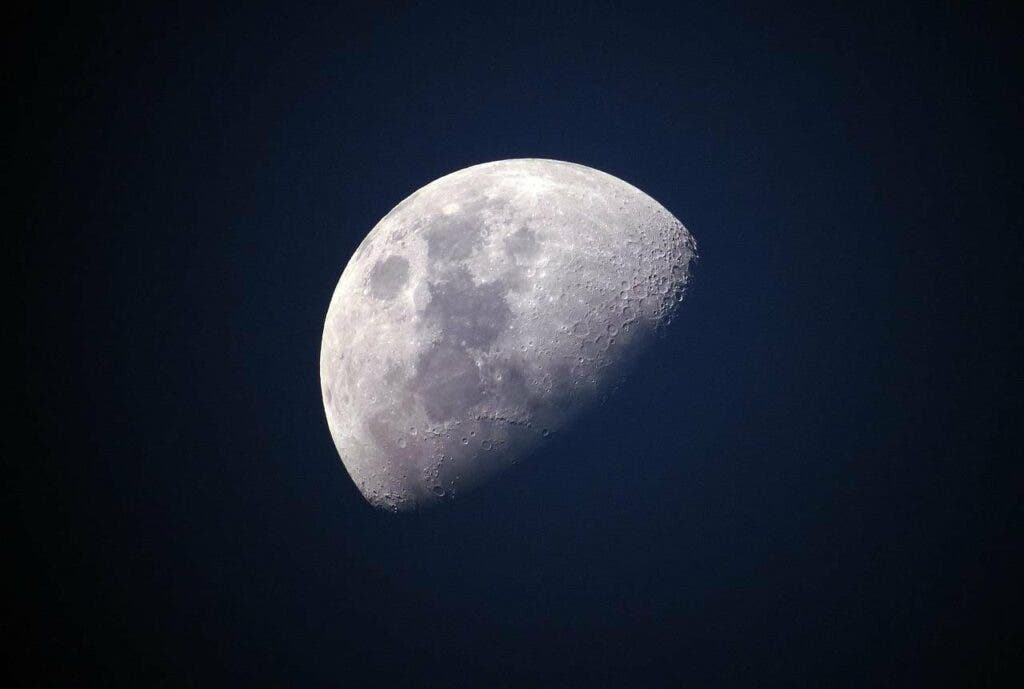The two faces of the Moon are likely the legacy of a massive asteroid impact that occurred billions of years ago, says new research.

Today, the thought of a night’s sky simply isn’t complete without the pale, pockmarked face of the moon shining down its cold, reflected night. But, were you to jump into a time machine and go back a few billion years, that bright circle would seem off. According to new research, it would be missing its distinctive dark spots.
These spots — dark, solidified lava flows — are the legacy of one of the most significant events in the history of the moon: a massive asteroid impact that also formed the Moon’s South Pole-Aitken (SPA) basin.
Insides out
“We know that big impacts like the one that formed the SPA would create a lot of heat,” said Matt Jones, a Ph.D. candidate at Brown University and the study’s lead author. The question is how that heat affects the Moon’s interior dynamics.
“What we show is that under any plausible conditions at the time that SPA formed, it ends up concentrating heat-producing elements on the nearside. We expect that this contributed to the mantle melting that produced the lava flows we see on the surface.”
The two faces of the Moon, one locked towards Earth, the other looking perpetually away, are two very different places. A vast surface of the nearside is dominated by the lunar mare, the dark-colored traces of ancient volcanism. On the other hand, the far side is littered with craters but lacks such lava flows almost entirely.
Exactly why the two are so different has long been an interesting but puzzling question. The difference between the two became apparent after the Soviet Luna missions and the U.S. Apollo program finally put the Moon within our reach, giving humanity our first glance at the far side of the Moon. Later missions would delve into the geochemical differences between these two faces as well, revealing that the nearside is defined by a chemical anomaly known as the Procellarum KREEP terrane (PKT). PKT — with KREEP being short for potassium (K), rare earth elements (REE), phosphorus (P) — seems to be concentrated in and around Oceanus Procellarum, the largest of the nearside volcanic plains but is quite rare elsewhere on the Moon. Among the minerals that make up the name, KREEP also includes elements like thorium which are produced through atomic decay, a process that releases heat.
Given this link between certain chemical elements and thermal energy — a link that holds true on Earth as well — Jones set out to understand how a significant asteroid impact would shift the internal chemistry of the Moon. Alongside his team, he carried out a battery of computer simulations analyzing these movements, in order to understand how the event impacted the heat flows throughout the Moon’s interior and, ultimately, the distribution of KREEP materials throughout its body. Researchers from Purdue University, the Lunar and Planetary Science Laboratory in Arizona, Stanford University, and NASA’s Jet Propulsion Laboratory also took part in the study.
KREEP is believed to be one of the last fractions (components) of the lunar mantle to have solidified after the Moon formed. Therefore, it should be dispersed on the top layer of the mantle, just below the crust, and evenly distributed. However, the team’s models show that a heat plume generated by an asteroid impact of the size that formed the SPA would severely alter the distribution of this material.
This plume, the researchers say, would have carried elements in KREEP predominantly away from the impact — towards the nearside volcanic plains of the Moon. KREEP material would have been pushed by the wave of heat generated at the impact zone, spreading beneath the crust and coming to rest on the nearside.
The team ran several scenarios for their models, from a dead-on hit to a glancing blow. While there were variations in the final distribution of KREEP materials seen in every case, all of them resulted in KREEP concentrations on the nearside — which is consistent with the PKT anomaly on the Moon today.
“How the PKT formed is arguably the most significant open question in lunar science,” Jones said. “And the South Pole-Aitken impact is one of the most significant events in lunar history. This work brings those two things together, and I think our results are really exciting.”
The paper “A South Pole–Aitken impact origin of the lunar compositional asymmetry” has been published in the journal Science Advances.









